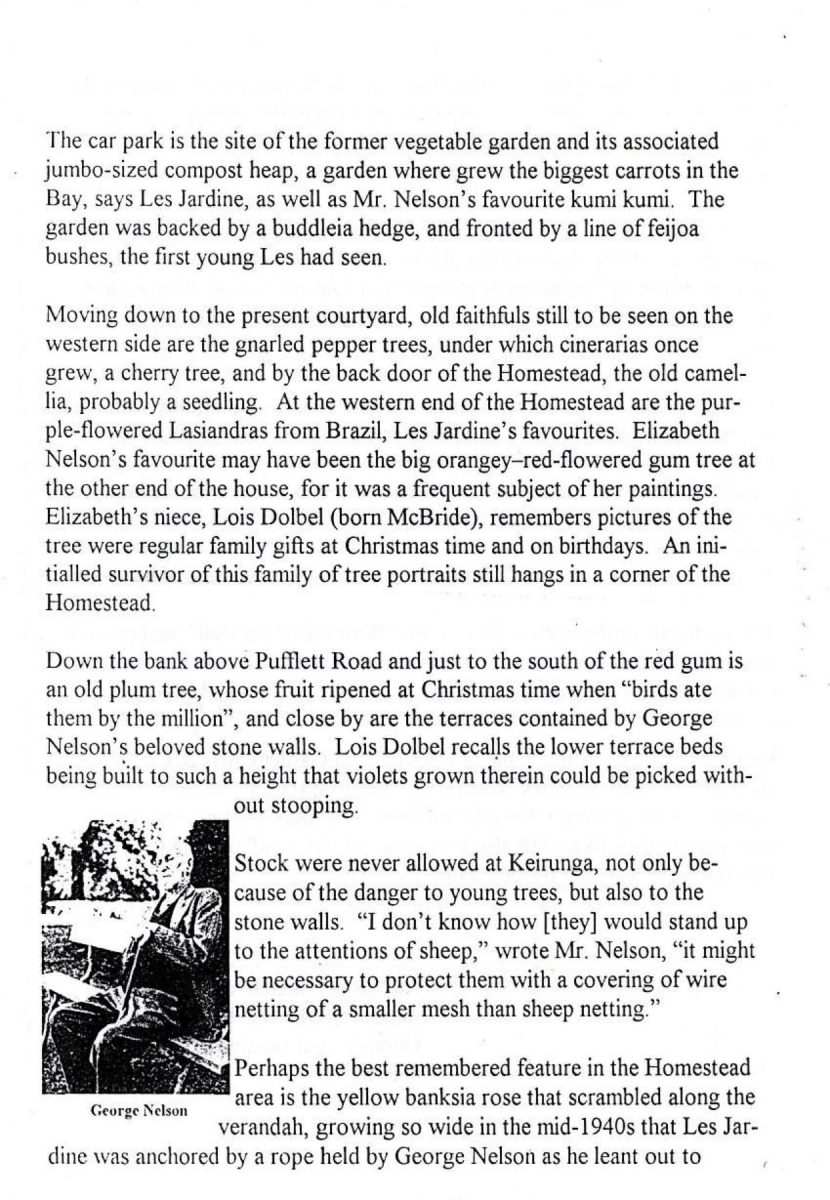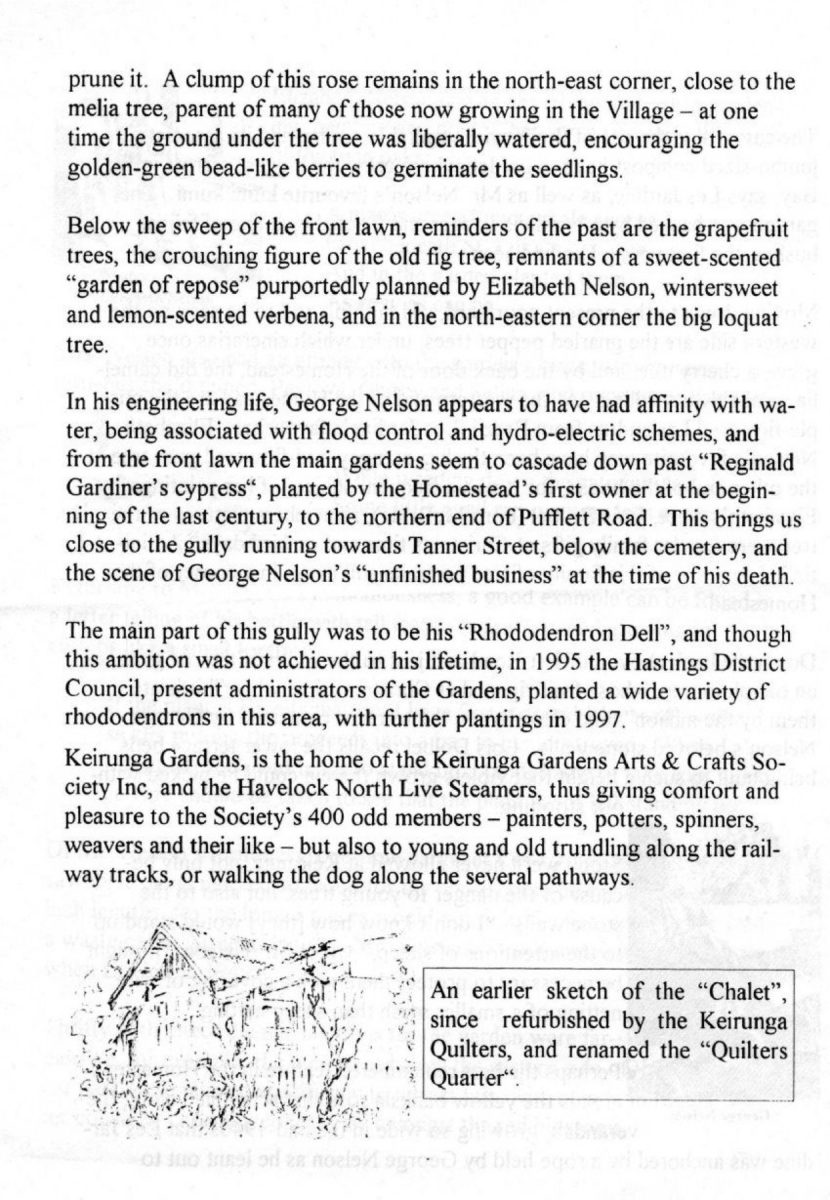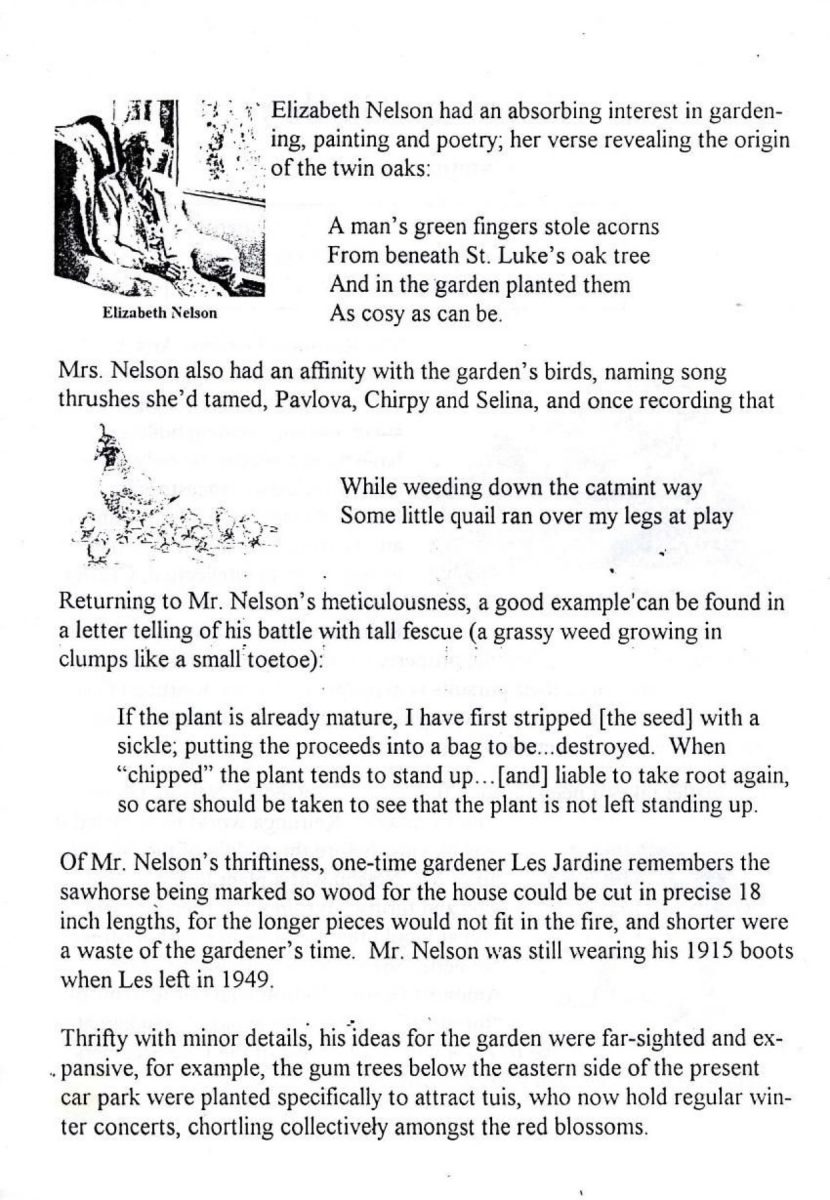prune it. A clump of this rose remains in the north-east corner, close to the melia tree, parent of many of those now growing in the Village – at one time the ground under the tree was liberally watered, encouraging the golden-green bead-like berries to germinate the seedlings.
Below the sweep of the front lawn, reminders of the past are the grapefruit trees, the crouching figure of the old fig tree, remnants of a sweet-scented “garden of repose” purportedly planned by Elizabeth Nelson, wintersweet and lemon-scented verbena, and in the north-eastern corner the big loquat tree.
In his engineering life, George Nelson appears to have had affinity with water, being associated with flood control and hydro-electric schemes, and from the front lawn the main gardens seem to cascade down past “Reginald Gardiner’s cypress”, planted by the Homestead’s first owner at the beginning of the last century, to the northern end of Pufflett Road. This brings us close to the gully running towards Tanner Street, below the cemetery, and the scene of George Nelson’s “unfinished business” at the time of his death.
The main part of this gully was to be his “Rhododendron Dell”, and though this ambition was not achieved in his lifetime, in 1995 the Hastings District Council, present administrators of the Gardens, planted a wide variety of rhododendrons in this area, with further plantings in 1997.
Keirunga Gardens, is the home of the Keirunga Gardens Arts & Crafts Society Inc, and the Havelock North Live Steamers, thus giving comfort and pleasure to the Society’s 400 odd members – painters, potters, spinners, weavers and their like – but also to young and old trundling along the railway tracks, or walking the dog along the several pathways.
Photo caption – An earlier sketch of the “Chalet”, since refurbished by the Keirunga Quilters, and renamed the “Quilters Quarter”.















Do you know something about this record?
Please note we cannot verify the accuracy of any information posted by the community.